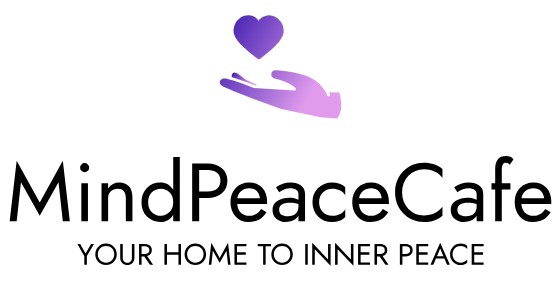Harmonizing Diversity through Mindfulness: Navigating Workplace Well-being

In today’s ever-evolving workplace landscape, fostering a culture of mindfulness is proving to be a pivotal factor in promoting inclusivity, enhancing productivity, and ensuring overall well-being. As workplaces strive for diversity and equity, integrating mindfulness strategies becomes a crucial aspect in creating an environment where every individual feels valued and supported. This comprehensive guide delves into the multifaceted realm of mindfulness strategies within diverse workplaces, offering insights into the benefits of mindfulness, the implementation of Headspace as a tool for diverse workforces, and the measurable impact of such initiatives on employee well-being and productivity. Additionally, this guide offers practical solutions for overcoming challenges in the integration of mindfulness programs while highlighting the transformative potential of Headspace in fostering lasting diversity and inclusion initiatives within organizations.
1. Understanding Mindfulness Strategies
Mindfulness strategies have emerged as valuable tools in contemporary workplaces, offering a range of benefits that extend beyond individual well-being. Implementing mindfulness practices in the workplace has become synonymous with promoting inclusivity, enhancing productivity, and fostering a supportive environment for employees from diverse backgrounds. Such strategies provide a foundation for improved mental health, stress reduction, and overall well-being, aligning with the evolving needs of modern work environments. Moreover, mindfulness in the workplace plays a pivotal role in cultivating an inclusive environment, reducing bias, and promoting diversity and equity, which, in turn, contributes to a more harmonious and effective workforce.
Research indicates that mindfulness practices have a direct impact on employee well-being and can significantly enhance individual and collective productivity. By embracing mindfulness strategies, organizations can create a workplace culture that not only prioritizes the mental health of its employees but also drives forward a sense of belonging and mutual respect across diverse teams. Moreover, mindfulness has been shown to positively influence decision-making processes, employee engagement, and overall job satisfaction, fostering an environment where individuals feel valued and empowered to contribute their best.
Understanding the significance of mindfulness strategies in the workplace provides a foundation for organizations to establish a conducive and thriving work environment. By integrating these strategies, organizations can harness the power of mindfulness to create a workplace where every individual’s well-being is prioritized, productivity is enhanced, and a culture of inclusivity thrives.
Benefits of Mindfulness
The benefits of mindfulness in the workplace extend into various facets of employee well-being and overall organizational effectiveness. Research demonstrates that mindfulness practices play a pivotal role in positively impacting employee mental health by reducing stress and anxiety, fostering emotional resilience, and enhancing self-awareness. This, in turn, contributes to a work environment where individuals are better equipped to cope with the challenges of a fast-paced, dynamic workplace. Studies have shown that mindfulness not only assists in managing stress but also cultivates a sense of balance, emotional intelligence, and empathy among employees, ultimately creating a more supportive and empathetic workplace culture.
Furthermore, the positive impact of mindfulness on employee well-being cannot be understated. By incorporating mindfulness practices, organizations can contribute to the holistic development of their employees, promoting not only mental but also physical health. Mindfulness initiatives have been linked to improved sleep patterns, heightened concentration, and a greater sense of overall satisfaction among employees, leading to higher levels of engagement and productivity.
In addition to the personal benefits reaped by employees, organizations themselves stand to gain from promoting mindfulness. By investing in mindfulness programs, companies may witness reduced absenteeism, enhanced teamwork, and an overall improvement in the quality of work delivered. The promotion of mindfulness strategies within the workplace not only benefits individual employees but also contributes to the organization’s long-term success and sustainability.
Inclusive Workplace Practices
In today’s diverse workplaces, fostering an inclusive environment is a critical goal for organizations striving to promote diversity and equity. Mindfulness plays a significant role in achieving this objective by reducing bias, enhancing awareness, and promoting a culture of respect and understanding. By incorporating mindfulness practices, organizations can create a space where employees from different backgrounds feel valued and respected, leading to a more cohesive and collaborative work environment. Mindfulness can serve as a bridge, connecting individuals from various cultures and experiences, thus breaking down barriers and promoting empathy and mutual understanding.
Moreover, mindfulness practices assist in reducing unconscious biases that may exist within the workplace. By encouraging individuals to be present in the current moment and to observe their thoughts and actions without judgment, mindfulness fosters a greater awareness of biases and prejudices. This heightened awareness can lead to more inclusive decision-making processes and interactions, ultimately contributing to a workplace culture that is more sensitive to and supportive of diversity.
In addition to reducing bias, mindfulness also plays a role in promoting diversity and equity within the organizational framework. Mindful practices encourage open communication, active listening, and genuine engagement with diverse perspectives, creating opportunities for individuals to feel heard and understood. This, in turn, not only strengthens the sense of belonging for all employees but also enriches the overall organizational culture with a broader range of experiences and viewpoints.
2. Implementing Headspace in a Diverse Workforce

Headspace, a popular mindfulness and meditation app, has gained recognition for its ability to support mental health and overall well-being in diverse workplaces. By implementing Headspace, organizations can provide their employees with a structured and accessible platform to cultivate mindfulness, reduce stress, and enhance emotional well-being. The app offers a diverse range of meditation sessions, making it adaptable to the unique needs and preferences of employees from varying backgrounds and cultures. In doing so, Headspace can be tailored to address specific stressors or challenges that individuals may face, providing a personalized approach to mental wellness within a diverse workforce.
In addition to catering to individual needs, Headspace also offers engagement strategies that can effectively reach and resonate with employees from diverse backgrounds. With its multilingual options and culturally sensitive content, Headspace creates an inclusive space for all employees to engage with mindfulness and meditation practices. Furthermore, the app’s content reflects a wide array of voices and experiences, promoting a sense of representation and empowerment for individuals from different cultural backgrounds. By leveraging Headspace, organizations can foster an environment where every employee feels supported in their journey towards improved mental well-being.
The implementation of Headspace in diverse workplaces not only serves to support individual employees but also contributes to the overall organizational well-being. With improved mental health and stress reduction among employees, organizations may experience higher levels of engagement, enhanced teamwork, and an overall boost in productivity, ultimately contributing to a more harmonious and effective workplace.
Tailoring Mindfulness Programs
Tailoring mindfulness programs to address the diverse needs of employees is a vital aspect of promoting inclusivity and well-being within organizations. Headspace, as a versatile mindfulness platform, offers the capability to customize and adapt its programs to resonate with employees from a variety of backgrounds and cultures. The app provides a range of meditation sessions that are designed to be inclusive and culturally sensitive, catering to the individual preferences and stressors of diverse employees. By offering content in multiple languages and incorporating diverse voices and experiences, Headspace ensures that its mindfulness programs are accessible and relatable to all employees, fostering a sense of representation and understanding.
Furthermore, Headspace’s customizable nature extends beyond language and cultural inclusivity. The app provides specific meditation tracks that address various aspects of well-being, such as stress management, sleep improvement, and resilience building, acknowledging that different individuals may benefit from tailored approaches to mindfulness. This adaptability enables organizations to implement a more holistic and personalized mental wellness strategy that accounts for the unique concerns and challenges experienced by employees in a diverse workforce.
By tailoring mindfulness programs to accommodate the diverse needs of employees, organizations can demonstrate a commitment to supporting the holistic well-being of their workforce. Through customization, organizations can create an environment where employees feel valued and understood, promoting a workplace culture that prioritizes inclusive well-being and supports individuals from various backgrounds.
Engagement Strategies
Engaging employees from diverse backgrounds in mindfulness activities and meditation practices is a critical endeavor within modern workplaces. To effectively embrace mindfulness as a universal practice, organizations can implement various engagement strategies to ensure participation and resonance among employees with different cultural backgrounds and experiences. One effective strategy involves providing a diverse range of meditation programs that address the specific needs and stressors of various demographic groups within the organization. By offering content that reflects the cultural diversity and experiences of employees, organizations can create a more inclusive and relatable approach to mindfulness, making it more appealing and relevant to a broader audience.
In addition to tailored content, organizations can introduce engagement strategies that facilitate open discussions and sharing of experiences related to mindfulness. By creating a platform for employees to exchange their thoughts and perspectives on mindfulness, organizations can foster a sense of collective understanding and unity, promoting an environment where individuals feel heard, respected, and valued. Furthermore, organizations can also establish support networks or mindfulness communities that bring together employees with shared cultural backgrounds or experiences, encouraging mutual support and the exchange of mindfulness practices specific to their cultures.
Ultimately, effective engagement strategies aim to establish a culture of mindfulness that is inclusive, supportive, and enriching for all employees. By actively involving employees from diverse backgrounds in mindfulness activities and meditation practices, organizations can create a workplace environment where individuals feel empowered to prioritize their well-being and contribute to a more harmonious, unified work culture.
3. The Impact of Mindfulness on Employee Well-being
The impact of mindfulness on employee well-being extends across multiple dimensions, presenting measurable effects that contribute to enhanced mental health, satisfaction, and overall productivity within the workplace. Research indicates that mindfulness strategies play a crucial role in reducing stress, anxiety, and burnout among employees, thereby significantly improving their mental well-being. By fostering emotional resilience and providing individuals with the tools to manage stress, mindfulness initiatives have been shown to create a work environment where employees feel supported, empowered, and better equipped to navigate the challenges of their roles.
Moreover, the introduction of mindfulness practices within organizations has exhibited a positive correlation with employee satisfaction. When individuals engage in mindfulness and meditation activities, they often experience improved sleep patterns, heightened concentration, and a greater sense of overall contentment. By prioritizing employee well-being through mindfulness, organizations demonstrate a commitment to fostering an environment where individuals feel valued and are more likely to exhibit higher levels of job satisfaction and engagement.
Furthermore, the impact of mindfulness on employee well-being extends to overall productivity within the workplace. Studies have shown that employees who regularly engage in mindfulness practices often demonstrate enhanced focus, decision-making abilities, and job performance. By reducing distractions, improving emotional regulation, and promoting a sense of clarity, mindfulness contributes to creating an environment that is conducive to higher productivity and improved work quality.
Measuring Employee Well-being
Measuring employee well-being within the context of mindfulness practices involves the use of various tools and methods designed to quantify the positive impact of such initiatives on employee satisfaction and overall well-being. Surveys and questionnaires are commonly utilized to gauge employee perception and experiences regarding mindfulness programs. These tools often assess factors such as stress levels, emotional well-being, job satisfaction, and overall engagement, providing a quantitative understanding of the program’s effects on employee well-being. In addition to employee feedback, organizations may leverage qualitative measures, such as focus groups or in-depth interviews, to gain insights into the specific ways mindfulness practices influence the daily experiences and attitudes of employees.
Furthermore, organizations often utilize performance metrics, including attendance rates, turnover rates, and productivity measures, to assess the impact of mindfulness initiatives on employee well-being. By analyzing these data points, organizations can draw connections between employee participation in mindfulness activities and tangible outcomes related to well-being and job performance. Additionally, some organizations may explore the integration of wearable technology and biometric measurements to track indicators such as heart rate variability and stress levels, offering objective data to complement subjective feedback from employees.
Understanding the multifaceted nature of measuring employee well-being allows organizations to develop a comprehensive assessment framework that captures both the qualitative and quantitative impacts of mindfulness programs, providing valuable insights into the overall success and effectiveness of these initiatives.
Productivity and Focus
Exploring the correlation between mindfulness practices and employee focus leads to valuable insights into the enhancement of work performance within diverse workplaces. Mindfulness has been linked to improved focus and cognitive abilities, offering employees the tools to navigate distractions and maintain attention on tasks amidst a dynamic work environment. By practicing mindfulness, employees may experience a heightened ability to concentrate on their responsibilities, thereby contributing to enhanced productivity and quality of work. This correlation underscores the relevance of mindfulness in promoting a work culture that values attentiveness and sustained focus, fostering an environment where diverse employees can effectively thrive.
Moreover, mindfulness has the potential to cultivate a sense of clarity and emotional regulation, which are essential components for improved work performance. By equipping employees with the means to manage stress and maintain a balanced emotional state, mindfulness contributes to a work environment that encourages thoughtful decision-making and creativity. These attributes are particularly significant within diverse workplaces, where individuals bring varied perspectives and insights to the table, creating an environment where mindfulness supports the amplification of diverse voices and ideas, ultimately leading to better problem-solving and innovation.
The correlation between mindfulness, employee focus, and improved work performance offers organizations a compelling pathway to nurture a workplace culture that values holistic well-being and recognizes the significance of diverse perspectives and contributions. By exploring this correlation, organizations can implement mindfulness strategies that not only enhance individual performance but also contribute to the collective success of the diverse workforce.
4. Overcoming Challenges in Implementing Mindfulness Programs
Implementing mindfulness programs within diverse workplaces often presents various challenges that organizations must address to ensure the effective and inclusive integration of these strategies. One significant hurdle involves navigating cultural sensitivity. It’s crucial for organizations to recognize and respect the diverse cultural backgrounds of their employees when introducing mindfulness initiatives. By acknowledging and understanding the cultural nuances related to well-being practices, organizations can develop tailored mindfulness programs that resonate with individuals from all backgrounds, fostering an environment of inclusivity and respect. Leadership involvement also plays a pivotal role in overcoming challenges related to mindfulness program implementation. Leaders need to champion and actively support mindfulness initiatives, demonstrating a genuine commitment to employee well-being and the fostering of an inclusive work environment. When leadership takes an active role in promoting mindfulness, it encourages participation from all employees and sets a positive example, emphasizing the importance of these practices within the organization. Creating a workplace environment that encourages participation from all employees requires the establishment of clear communication channels and support systems. Organizations can overcome challenges by providing comprehensive information about mindfulness programs, offering flexibility in participation, and cultivating an open dialogue that invites input from employees at all levels. Additionally, organizations can implement training sessions and workshops that address any misconceptions or concerns related to mindfulness, ensuring that employees feel comfortable and informed about the initiatives being introduced. By addressing these challenges, organizations can lay the groundwork for a workplace environment where mindfulness programs are seamlessly integrated, supporting the well-being of all employees while fostering a culture that values diversity and inclusivity.
Cultural Sensitivity
Cultural sensitivity within mindfulness programs is paramount for fostering an inclusive and supportive workplace environment. Organizations seeking to implement mindfulness initiatives need to recognize the significance of cultural awareness in these programs. Understanding the diverse cultural backgrounds and beliefs of employees plays a vital role in tailoring mindfulness practices to resonate with individuals from various cultural backgrounds. This approach promotes an environment where all employees feel valued and respected, emphasizing the importance of inclusivity and cultural understanding within the fabric of the organization. Navigating potential cultural barriers necessitates open communication and a willingness to learn from employees representing diverse cultural backgrounds. By fostering an environment where individuals feel empowered to share their cultural perspectives and experiences, organizations can identify and address potential barriers to mindfulness practices. This collaborative approach not only enriches the mindfulness programs but also cultivates a sense of belonging and unity among employees, creating a space where cultural diversity is celebrated and integrated into the organizational well-being framework. Additionally, organizations can develop culturally sensitive mindfulness content that acknowledges and respects the traditions and beliefs of various cultural groups. By incorporating diverse perspectives and embracing cultural nuances, mindfulness programs can effectively break down cultural barriers and create an environment where all employees feel included and supported in their well-being journey. This proactive approach not only aids in addressing potential cultural challenges but also lays the foundation for a workplace culture that fosters understanding, respect, and unity.
Leadership Involvement
Leadership involvement in mindfulness initiatives plays a pivotal role in ensuring the participation and success of diverse teams within organizations. When leaders actively champion mindfulness practices, they demonstrate a commitment to fostering a supportive work environment centered around employee well-being. This involvement signifies that mindfulness is not only encouraged but also valued within the organizational culture, thereby setting the tone for its acceptance and adoption across diverse teams. Furthermore, leadership plays a critical role in shaping organizational values and priorities. By openly advocating for and participating in mindfulness initiatives, leaders communicate the organization’s dedication to promoting a holistic approach to employee well-being. Their involvement emphasizes that mindfulness is integral to the organizational ethos, encouraging employees to engage with these practices and validating the importance of well-being in the workplace. This active support from leadership can lead to a cultural shift where mindfulness becomes a shared value, facilitating participation and success across diverse teams. Moreover, leadership involvement fosters a sense of unity and cohesion among employees. When leaders demonstrate their commitment to mindfulness, it signals that these practices are inclusive and transcend hierarchical boundaries. This encourages employees from diverse backgrounds to engage with mindfulness strategies, contributing to a collective sense of well-being and mutual support within the organization. Ultimately, leadership involvement not only promotes the adoption of mindfulness initiatives but also reinforces a culture that prioritizes inclusivity, well-being, and success for all employees.
5. Leveraging Headspace for Lasting Diversity and Inclusion
Headspace, a widely recognized mindfulness and meditation app, has the potential to serve as a catalyst for sustainable diversity, equity, and inclusion initiatives within the workplace. By leveraging Headspace, organizations can provide employees with a structured platform that supports their mental well-being, offering accessible resources to foster a more inclusive work environment. The app’s diverse range of mindfulness programs and content can be tailored to address the unique needs and challenges of employees from various backgrounds, promoting a culture of respect, understanding, and support across the organization. Moreover, Headspace content and programs emphasize empowerment and representation, reflecting a wide array of voices and experiences. By incorporating diverse perspectives in its mindfulness content, Headspace contributes to creating a workplace environment where employees feel a sense of belonging and recognition, fostering an inclusive culture that values the diversity of its workforce. The app’s multilingual options and culturally sensitive content further contribute to building an environment where all employees can engage with mindfulness and meditation practices, irrespective of their cultural backgrounds. By exploring the impact of Headspace’s mindfulness strategies, organizations gain insights into the long-term effects on diversity, equity, and inclusion initiatives within the workplace. Understanding the methods to assess the lasting impact of Headspace’s mindfulness programs provides organizations with valuable data to gauge the effectiveness of these initiatives in promoting a sustainable and inclusive work culture. Through ongoing assessment and feedback, organizations can adapt and refine their mindfulness strategies to ensure that they remain aligned with the evolving needs of their diverse workforce.
Empowerment and Representation
Headspace’s content and programs have been instrumental in promoting empowerment and representation of diverse voices, thus fostering a profound sense of belonging for all employees. By incorporating a wide array of voices and experiences in its mindfulness content, Headspace actively contributes to creating an environment where individuals from diverse backgrounds feel recognized and celebrated. This platform serves as a means to amplify diverse perspectives, ensuring that all employees feel represented and valued within the organizational framework. Moreover, Headspace’s content emphasizes empowerment, offering individuals a toolset for self-care, resilience, and emotional well-being. By providing resources for personal growth and mental wellness, Headspace equips employees with the means to empower themselves, fostering a culture where individuals feel supported in their well-being journey. Additionally, the app’s multilingual options and culturally sensitive content further reinforce the empowerment and sense of representation, ensuring accessibility and relevance to employees from various cultural backgrounds. Examining how Headspace’s content and programs foster a sense of belonging for all employees reveals the profound impact of mindfulness on shaping an inclusive work culture. The app’s emphasis on diverse representation and empowerment contributes to deepening the culture of respect, understanding, and support within the workplace. By promoting a sense of belonging and recognition, Headspace plays a crucial role in ensuring that all employees feel valued and empowered, thus contributing to a work environment where diversity is celebrated and integrated into the fabric of organizational well-being strategies.
Measuring the Impact
Measuring the long-term impact of Headspace’s mindfulness strategies on diversity, equity, and inclusion within the workplace involves a multifaceted approach that encompasses both qualitative and quantitative assessment methods. One crucial aspect involves gathering feedback from employees to understand their experiences with Headspace’s mindfulness programs. This feedback can be obtained through surveys, interviews, and focus groups, allowing organizations to gauge the effectiveness of these initiatives in fostering a more inclusive work environment. In addition to employee feedback, quantitative measures such as analyzing participation rates, engagement metrics, and relevant organizational data can provide insights into the reach and influence of Headspace’s mindfulness strategies. By examining changes in key performance indicators and well-being metrics over time, organizations can assess the impact of these initiatives on diversity, equity, and inclusion, identifying trends and patterns that shed light on the long-term effects of mindfulness practices. Furthermore, organizations can consider conducting in-depth impact assessments to evaluate the sustained influence of Headspace’s mindfulness programs on workplace culture. These assessments may involve examining changes in employee satisfaction, turnover rates, and the integration of diversity and inclusion principles within the organizational framework. By deploying a comprehensive assessment framework, organizations can capture the intended and unintended consequences of Headspace’s mindfulness strategies, facilitating informed decision-making and ongoing refinement of these initiatives to align with the evolving needs of the workforce.
How can mindfulness programs benefit diverse workplaces?
Mindfulness programs can benefit diverse workplaces by promoting inclusivity, reducing bias, and fostering a supportive environment for employees from various backgrounds. Such programs provide tools for stress reduction, emotional awareness, and enhanced focus, creating an environment where all employees feel valued and supported.
What role does leadership play in the success of mindfulness initiatives?
Leadership involvement is crucial for the success of mindfulness initiatives, as it sets the tone for their acceptance and adoption across diverse teams. When leaders champion mindfulness practices, they communicate the organization’s commitment to employee well-being and the fostering of an inclusive work environment.
How can organizations measure the impact of mindfulness on diversity and inclusion?
Organizations can measure the impact of mindfulness on diversity and inclusion through a combination of methods, including employee feedback, quantitative measures such as participation rates, and in-depth impact assessments. These approaches provide insights into the long-term effects and influence of mindfulness strategies on workplace culture.




